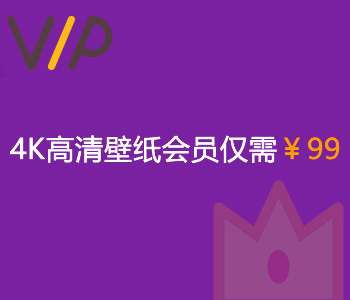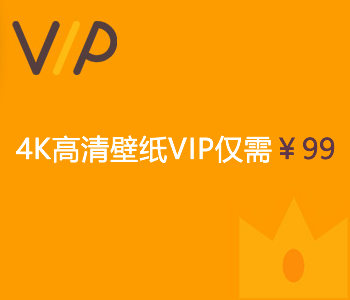先看效果是否可以满足你们,如果可以满足你只要一步一步照着做绝对没有错。
本人技术不佳,研究了一整天,全网的大佬们写的博客看的晕头转向,避免大伙再走弯路,跟着我以下步骤一点一点来绝对可以实现。
最终效果图: (如果你看着还满意的话那就跟着教程一步一步来吧)

首先你要确保你的项目中安装了 uview的UI框架和vuex,具体安装教程这两个网上都有详细教程,我这项目是Vue3.0的,用的是uview-plus框架。
第一步:配置信息
pages.js 添加 "custom": true 属性

第二步:添加自定义tabBar代码文件
注意:这里是按官方要求必须放在项目根目录下,而且文件名不能修改,index中代码如下:

<template> <view> <u-tabbar :value="index" @change="tabBarChange" :fixed="true" :placeholder="true" :safeAreaInsetBottom="true" activeColor="#d81e06"> <u-tabbar-item text="首页"> <template #active-icon> <image class="u-page__item__slot-icon" :src="list[0].selectedIconPath"></image> </template> <template #inactive-icon> <image class="u-page__item__slot-icon" :src="list[0].iconPath"></image> </template> </u-tabbar-item> <u-tabbar-item text="转让"> <template #active-icon> <image class="u-page__item__slot-icon" :src="list[1].selectedIconPath"></image> </template> <template #inactive-icon> <image class="u-page__item__slot-icon" :src="list[1].iconPath"></image> </template> </u-tabbar-item> <u-tabbar-item @click="show = true"> <template #active-icon> <image class="u-page__item__slot-icon-big" :src="list[2].selectedIconPath"> </image> </template> <template #inactive-icon> <image class="u-page__item__slot-icon-big" :src="list[2].iconPath"></image> </template> </u-tabbar-item> <u-tabbar-item text="积分"> <template #active-icon> <image class="u-page__item__slot-icon" :src="list[3].selectedIconPath"></image> </template> <template #inactive-icon> <image class="u-page__item__slot-icon" :src="list[3].iconPath"></image> </template> </u-tabbar-item> <u-tabbar-item text="我的"> <template #active-icon> <image class="u-page__item__slot-icon" :src="list[4].selectedIconPath"></image> </template> <template #inactive-icon> <image class="u-page__item__slot-icon" :src="list[4].iconPath"></image> </template> </u-tabbar-item> </u-tabbar> <view> <u-popup :overlayOpacity="0.6" :round="10" :show="show" @close="close" @open="open"> <view class="issue-item"> <view class="issue-item-buy" @click="toBuy"> <text>我要卖</text> </view> <view class="issue-item-sell"> <text>我要买</text> </view> </view> </u-popup> </view> </view></template><script> export default { data() { return { show: false, list: [{ "pagePath": "/pages/index/index", "text": "首页", "iconPath": "/static/tabs/home_default.png", "selectedIconPath": "/static/tabs/home_selected.png" }, { "pagePath": "/pages/makeOver/makeOver", "text": "转让", "iconPath": "/static/tabs/mass_default.png", "selectedIconPath": "/static/tabs/mass_selected.png" }, { "pagePath": "/pages/issue/issue", "text": "发布", "iconPath": "/static/images/tab_issue.png", "selectedIconPath": "/static/images/tab_issue.png" }, { "pagePath": "/pages/integral/integral", "text": "积分", "iconPath": "/static/tabs/mass_default.png", "selectedIconPath": "/static/tabs/mass_selected.png" }, { "pagePath": "/pages/my/my", "text": "我的", "iconPath": "/static/tabs/my_default.png", "selectedIconPath": "/static/tabs/my_selected.png" } ] } }, computed: { index() { return this.$store.state.tabbarIndex } }, methods: { tabBarChange(e) { if (e !== 2) { uni.switchTab({ url: this.list[e].pagePath }) } }, //点击发布按钮的弹出层 open() { console.log('open'); }, close() { this.show = false; console.log('close'); }, //点击我要卖 toBuy() { console.log("点击了"); uni.switchTab({ url: '/pages/issue/issue' }) } } }</script><style lang="scss"> .u-page__item__slot-icon { width: 50rpx; height: 50rpx; } .u-page__item__slot-icon-big { width: 120rpx; height: 120rpx; margin-bottom: 30rpx; } .issue-item { height: 400rpx; display: flex; justify-content: center; align-items: center; .issue-item-buy, .issue-item-sell { width: 30%; height: 100rpx; font-size: 28rpx; border-radius: 20rpx; background-color: pink; margin: 40rpx; line-height: 100rpx; text-align: center; } }</style>下面我给大家先讲讲实现的逻辑,首先逛了一天的博客,有的人用for循环来做,刚开始我也用循环,但是我中间有个凸起的发布按钮,我想做出点击后有弹出层,然后再选择的功能,按照网上他们说的去做都直接跳转了,我这点击发布效果如下图: 没办法我只能我只有会写死,反正后面这个换的也不是太频繁。

我再讲讲代码中需要注意的点吧,首先 如下图的value值我绑定的computed计算属性中的index,然后methods中的tabBarChange方法呢是点击tabBar切换的每一项,下面我又加个if判断就是用来控制中间发布的那个图标点击后不跳转


以上配置好后,那就在每一个跳转页配一下代码,作用是用来更store中的changgeTabbarIndex的值,也就是确保页面跳转后,图标选中你所点击的那个页面,我这里每个页面都配置了一下。代码如下:
onShow() { this.$store.commit('changeTabbarIndex', 1) },

第三步:安装配置vuex
首先说为什么要安装vuex,因为通过vuex来实现组件和组件之间数据传递,当你点击不同tabBar来回切换的时候把对应的值存在store中。
安装命令:npm install vuex --save
配置vuex:项目根目录下新建 store/index.js文件,代码如下:

import { createStore} from 'vuex'const store = createStore({ //全局状态 state: { tabbarIndex: 0, }, //同步的方法,commit mutations: { changeTabbarIndex(state, index) { state.tabbarIndex = index; console.log('uvexIndex',state.tabbarIndex); } }, //异步的方法 dispatch actions: { }})export default store第四步:配置主入口文件

到这里就已经完成了,这是本人第一个小程序项目,希望能给新手们带来点帮助,欢迎大佬们前来批评指正。
































